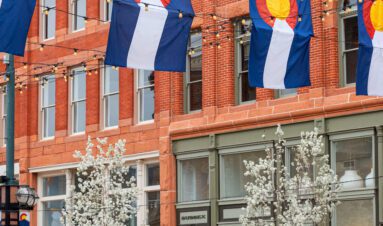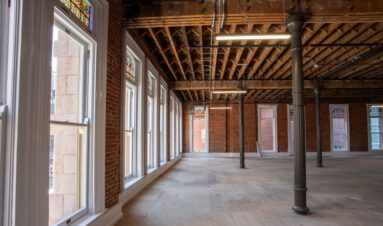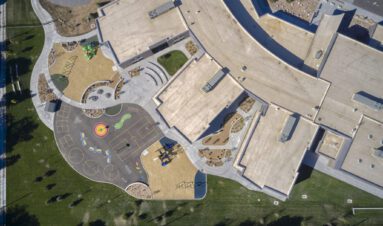Rowland+Broughton Architecture / Urban Design / Interior Design
1830 Blake Street
Fast Facts
Architect: Rowland + Broughton Architecture Unknown
Architectural Style: Warehouse Vernacular
Year Built: 1892
Designation: Denver Landmark District
Neighborhood: Lower Downtown
Original Building: E.B. Millar Coffee
Handicap Accessible
New DOD Location
Rowland+Broughton Architecture / Urban Design / Interior Design
The building holding Rowland+Broughton is sited on the southeast of Blake and sits in the center of the block, halfway between 18th and 19th Streets. It is a remnant of the late 19th century building boom that gave lower downtown the large collection of warehouses that remain today. Spurred by silver mining and the then-recent connection of Denver’s rails to the transcontinental system, LoDo was built up relatively quickly to accommodate the expanding economy of Denver that thrived before the silver crash.
The two-story building is made mostly of dark brick. The front façade has three large bays that hold storefronts on the street level. Above, subtle corbeling pushes the second level façade out slightly, defining the stone sills and emphasizing the vertical divisions in the window bands. A small corbeled cornice occupies the top, hiding the flat roof behind.
Following a storefront restoration in 2018, R+B planned a reconfiguration and energy-efficiency upgrade to the interior on the ground floor. Previous non-historic partition walls and restrooms were removed and upgraded with more contemporary configurations and accessible restrooms that conform to modern code requirements. Consistent with a functional warehouse design, an open plan was implemented for the interior layout. Original columns, structural elements, high ceilings, brick walls and oak floors have all been left exposed. The interior now consists of two conference rooms, studio space and a library. Features like built-in shelving help to maximize the efficient use of space and energy-efficient occupancy, and daylight sensors and LED lights have been added to improve energy usage.
LoDo holds special historic significance as the birthplace of Denver and an architectural significance that was recognized officially in 1988 when it was named a historic district. Before the founding of Denver in 1858, mining settlements existed at the confluence of the South Platte River and Cherry Creek for years. As Denver grew, it did so out of the heart of what is now LoDo. When warehouses were quickly built up, they were designed to be more than simple utilitarian spaces. Unlike industrial plants designed by engineers, most of Denver’s warehouses were designed by architects so that companies could offer more prestigious buildings to act as not just warehouse space but also as corporate offices and showrooms.
References
Noel, Thomas J., & Norgren, Barbara S. (1987). Denver: The City Beautiful. Denver, Colorado: Historic Denver, Inc.
McCune, C. (2002). Denver’s Lower Downtown A Comparative Study. Tempe, Arizona: Arizona State University.
Map
Rowland+Broughton Architecture / Urban Design / Interior Design
1830 Blake Street, denver, co
Nearby Sites
View All
Larimer Square Frontenac Building
The Frontenac buildings at Larimer Square have served many uses over their 140+ years of existenc...
More Info
Larimer Square Granite Building
The Granite buildings at Larimer Square have served many uses over their 140+ years of existence....
More Info
MOA Architecture
MOA ARCHITECTURE is a diverse team of talented and experienced architects, interior designers, pl...
More Info